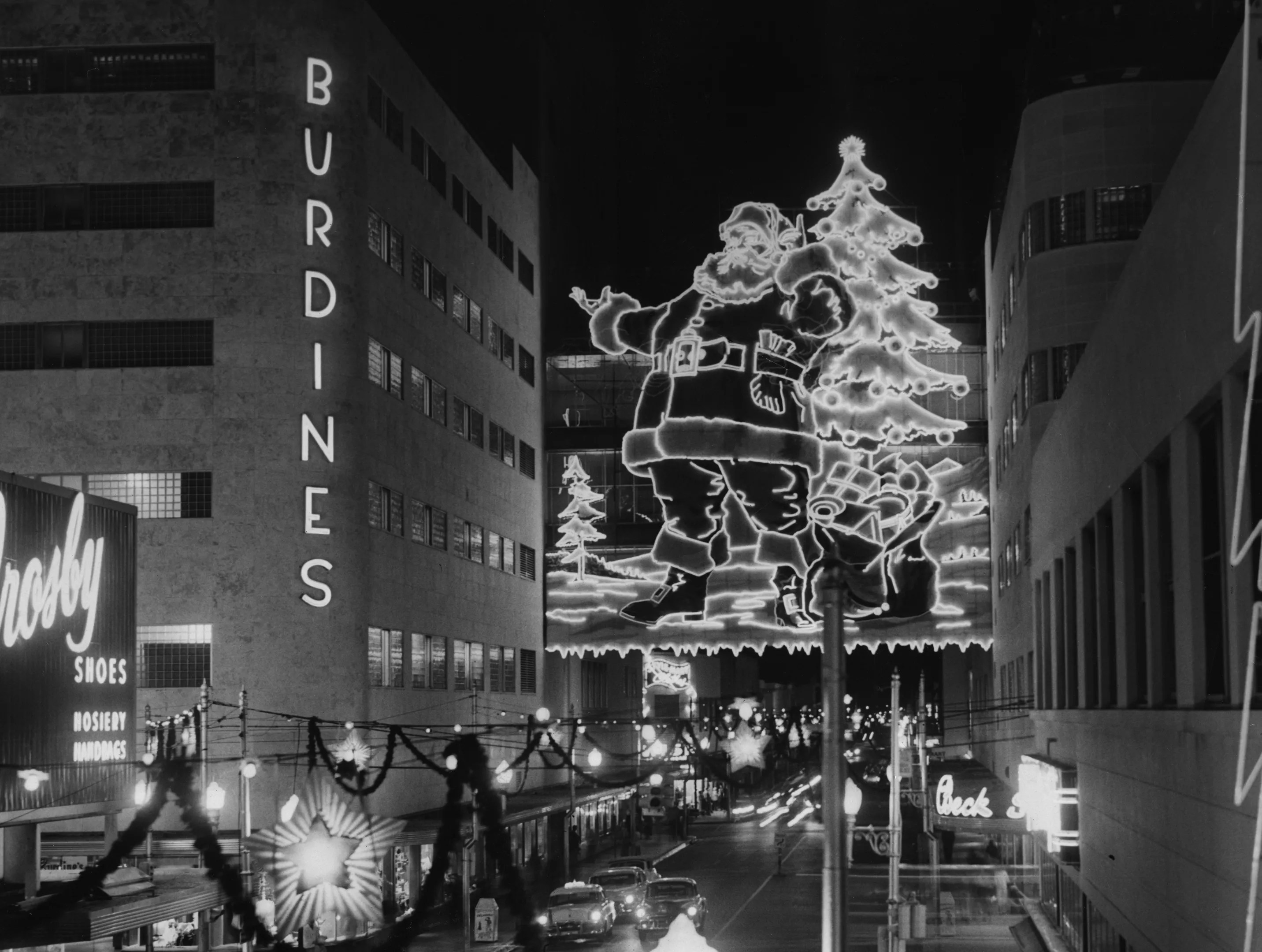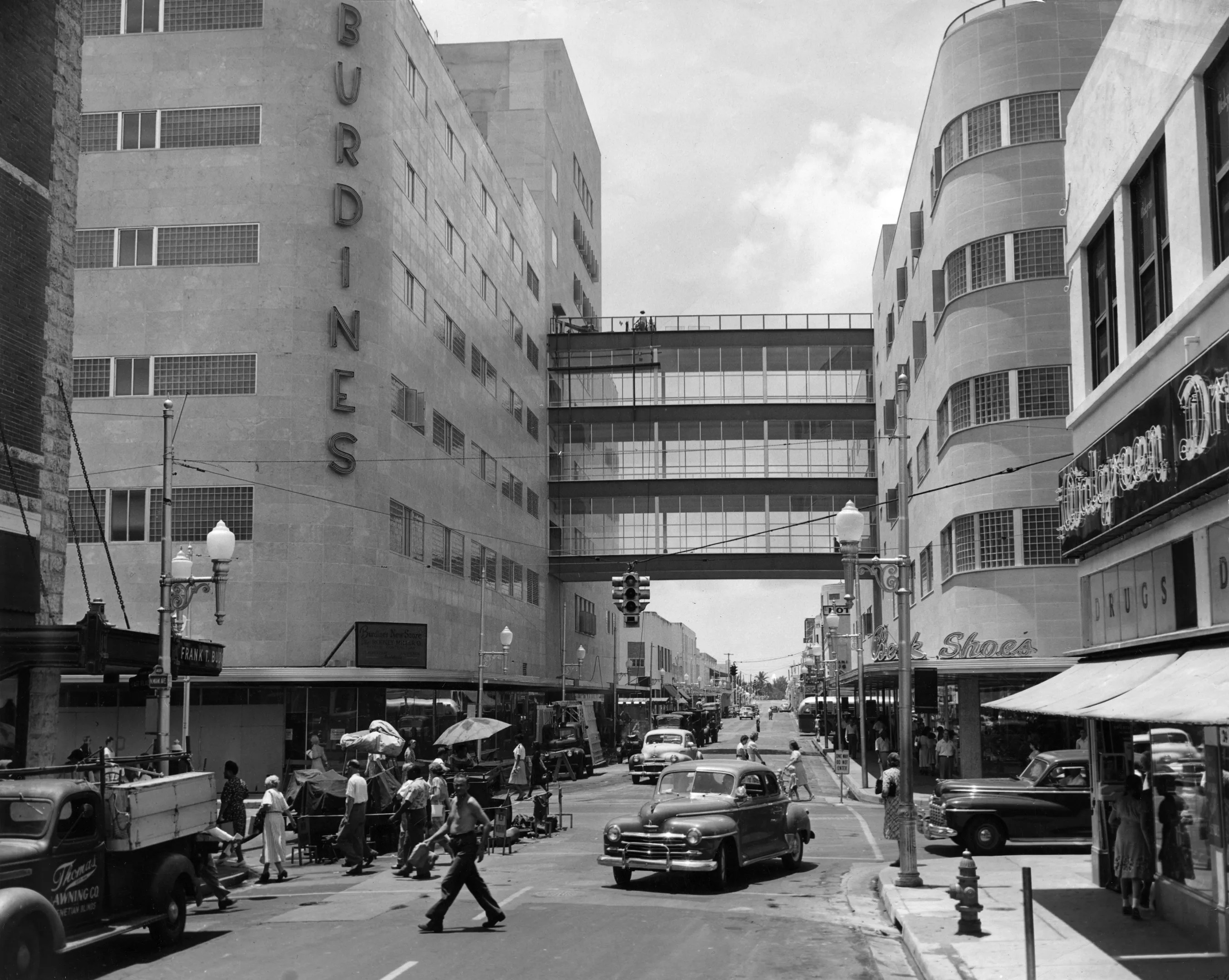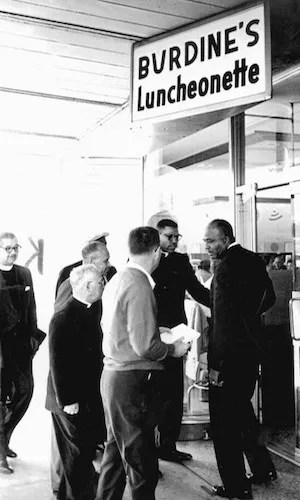
Courtesy of HistoryMiami Museum / Miami News Collection, 1989-011-23202

Audio By Carbonatix
Few stores have played as big a role in the history of Miami as the Macy’s in downtown, which the company announced will close permanently in the near future. Before it was a Macy’s, though, the building bore the name Burdines, and it was the flagship for Florida’s first family of retail. Burdines has been a part of the city’s history since the beginning. The store’s founder, William Burdine, and his son John came to Miami only two years after the city was incorporated and built the first W.M. Burdine & Son clothing store in downtown.
That store would go on to be incredibly successful, and the family would move its company to Miami shortly thereafter and build Burdines into what would become one of the most popular department stores in the state for decades. And the downtown location was the root of that success.
“I’ll tell you what,” says Paul George, HistoryMiami’s resident historian, “it’s meant a lot. It was really the centerpiece of retail, the downtown building… I can’t overstate how important it was for the retail history of the area. It was the store of stores… Even when that store began to build branches – Miami Beach, West Palm Beach, Fort Lauderdale, and ultimately suburbia, Dadeland, and all the other places – that downtown store was still the most important store in Miami into the 1960s.”

The Burdines buildings, mostly completed in the 1930s and shown here in 1949, were a driving force behind much of downtown Miami’s growth.
Courtesy of HistoryMiami Museum / Miami News Collection, 1989-011-10442
And that importance wasn’t merely a matter of profitable retail. The Burdines store was a hub of activity for the city. It was a near-perfect archetype of the streamline moderne style of architecture that would grow out of the art deco school of design in the ’30s. “People met there, people shopped there, people ate there, people went to fashion shows there,” George explains. “Christmastime, everybody, every kid converged on the place… It was really the centerpiece of everything.”
It can even be argued that without the Burdines flagship in downtown, there wouldn’t be a downtown Miami, at least not as we know it today. George notes that one of the biggest catalysts for the city’s growth in the 20th Century was tourism, and “tourists just flocked to that store.” Imagine a Miami that didn’t have that store as a nerve center, that had an empty lot or an office space in its place. It’s not hard to imagine that such a Miami wouldn’t have had the draw that the downtown Burdines gave it. Perhaps the retailers and companies that came to town after William, John, and Roddy Burdine built their business into what it became between the 1900s and ’30s might never have made their way here.

Clergymen and activists staged demonstration of civil disobedience at Burdines and other downtown Miami businesses during the civil rights movement.
State Archives of Florida
“It was a real Miami store,” George says. “It advertised itself later as a Florida store, and there were 50 of them throughout the state of Florida by the time Macy’s put its name on it in the spring of 2005. It was a tremendous civic booster.”
The downtown Burdines also had a place of real significance when the nation entered the civil rights era. Many people think of the sit-ins in Greensboro, North Carolina, as the first ones of their kind in America, but the civil rights activists of the Miami chapter of the Coalition of Racial Equality had staged sit-ins in downtown Miami a year earlier.
“It was a trailblazer before Greensboro,” George says. “There was actually a series of sit-ins at McCrory’s in 1959 across the street from Burdines, and the McCrory’s ownership, fortunately, finally caved in and desegregated the lunch counter in 1959. Burdines would follow in 1960.”
Of course, many can remember when Burdines became Burdines-Macy’s and then simply Macy’s. To some who grew up with “The Florida Store,” it was sad to see the name change, and for those who remember what it once was, it will be sad to see the downtown store shut its doors for the last time. Worse, the building is not listed on the National Register of Historic Buildings, so depending upon what happens next with this Macy’s location, the building might not be there at all for very long.
According to Macy’s, there will be clearance sales at the store for at least the next two months beginning today, January 8. That’s a good reason to visit the store, think about how the city grew up around it, and say a last goodbye to Burdines.